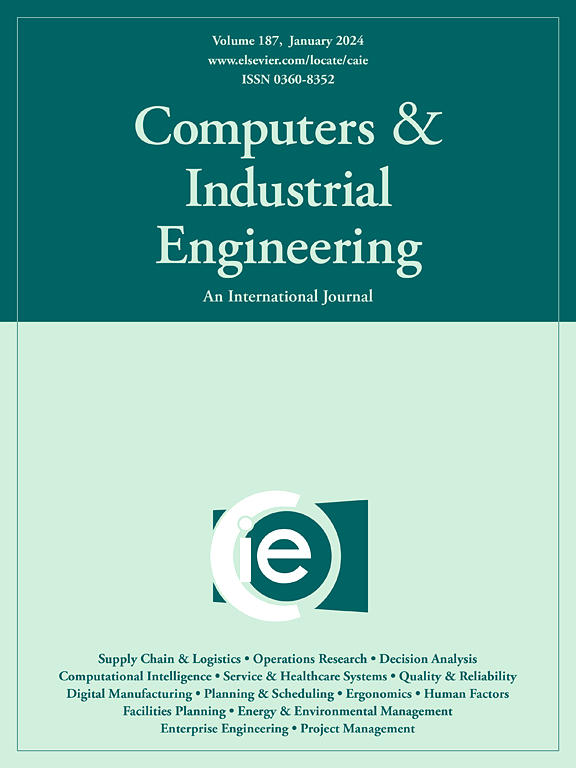Phase I change-point detection for ordinal profiles with arbitrary design: A nonparametric method and its application to warranty claims analysis
IF 6.7
1区 工程技术
Q1 COMPUTER SCIENCE, INTERDISCIPLINARY APPLICATIONS
引用次数: 0
Abstract
The functional relationship, commonly referred to as a profile, typically describes the quality characteristics of products or processes. Specifically, the ordinal profile characterizes the functional relationship between a categorical response, which consists of no less than three attributes arranged in a specific order, and certain explanatory variables. Statistical process control for ordinal profiles is attracting increasing interest because it is essential to guarantee product and service quality. However, existing studies have some limitations in modeling and retrospectively analyzing ordinal profiles. Besides, the design points within a profile may not be deterministic in practice. In some cases, they can be random, and different profiles may have different design points. Therefore, we propose a monitoring scheme in Phase I to detect a potential change point in the dataset of ordinal profiles with arbitrary design. The proposed method integrates a change-point model with a two-sample generalized likelihood ratio test on the basis of nonparametric regression. The detection effectiveness and diagnostic accuracy of the method are verified by numerical simulation. In addition, a case study on warranty claims data analysis is presented to further demonstrate the implementation of the proposed method.
任意设计有序轮廓的第一阶段变化点检测:一种非参数方法及其在质保索赔分析中的应用
通常称为概要文件的功能关系,典型地描述了产品或过程的质量特性。具体来说,序型特征描述了由不少于三个属性按特定顺序排列的分类反应与某些解释变量之间的函数关系。序数型型材的统计过程控制是保证产品和服务质量的关键,正引起越来越多的关注。然而,现有的研究在模拟和回顾性分析序数剖面方面存在一定的局限性。此外,在实践中,轮廓中的设计点可能不是确定的。在某些情况下,它们可能是随机的,并且不同的概要文件可能具有不同的设计点。因此,我们在第一阶段提出了一种监测方案,以检测任意设计的有序轮廓数据集中的潜在变化点。该方法在非参数回归的基础上,将变点模型与双样本广义似然比检验相结合。通过数值仿真验证了该方法的检测有效性和诊断准确性。此外,还以保修索赔数据分析为例,进一步验证了该方法的实现。
本文章由计算机程序翻译,如有差异,请以英文原文为准。
求助全文
约1分钟内获得全文
求助全文
来源期刊

Computers & Industrial Engineering
工程技术-工程:工业
CiteScore
12.70
自引率
12.70%
发文量
794
审稿时长
10.6 months
期刊介绍:
Computers & Industrial Engineering (CAIE) is dedicated to researchers, educators, and practitioners in industrial engineering and related fields. Pioneering the integration of computers in research, education, and practice, industrial engineering has evolved to make computers and electronic communication integral to its domain. CAIE publishes original contributions focusing on the development of novel computerized methodologies to address industrial engineering problems. It also highlights the applications of these methodologies to issues within the broader industrial engineering and associated communities. The journal actively encourages submissions that push the boundaries of fundamental theories and concepts in industrial engineering techniques.
 求助内容:
求助内容: 应助结果提醒方式:
应助结果提醒方式:


